7 signs you're overwatering indoor plants – and how to rescue them!
Overwatering indoor plants can be just as deadly as under-watering. Here's how to avoid killing your plants with kindness
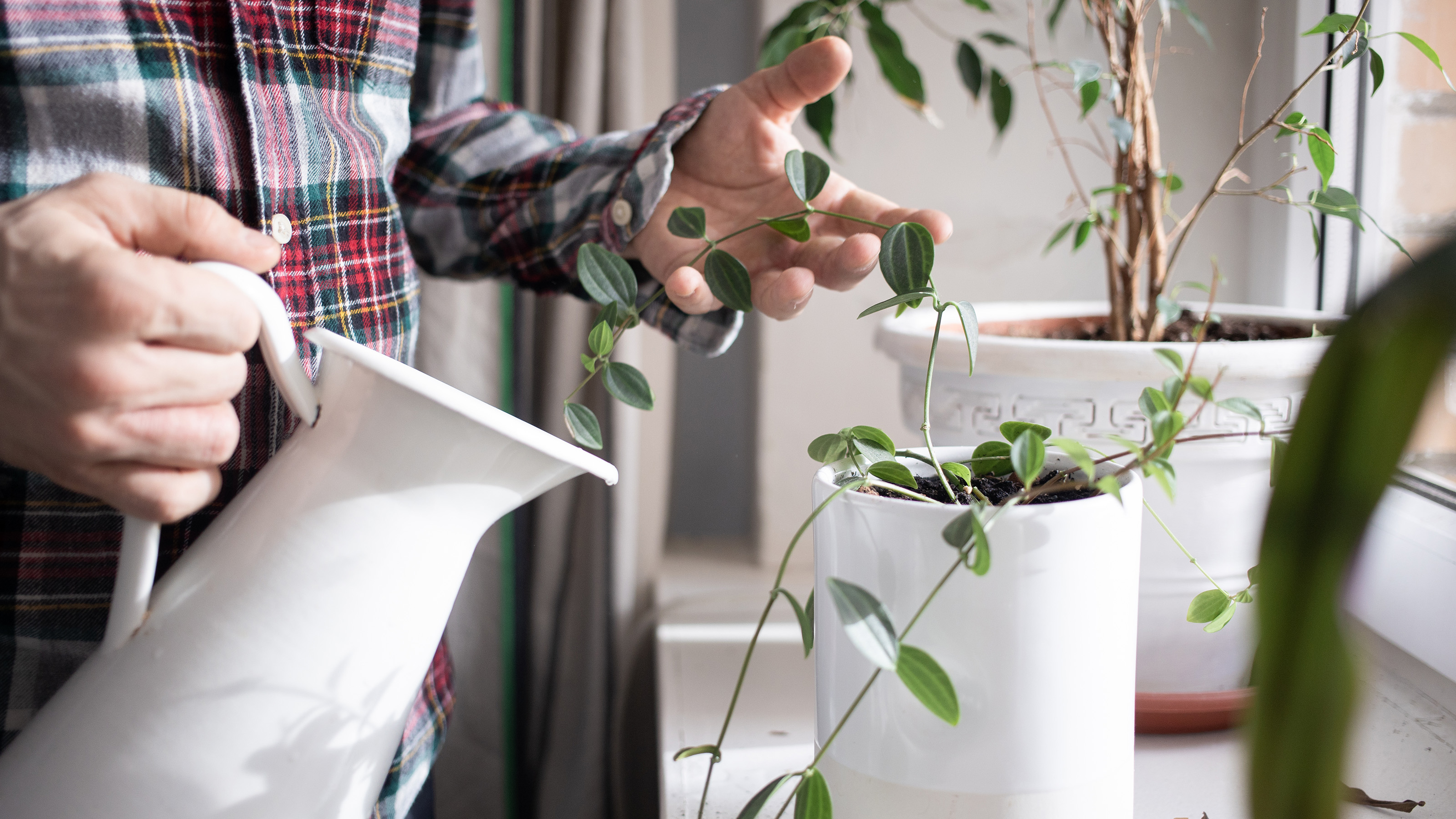

Overwatering indoor plants is so easy to do, and is one of the most common ways to kill a houseplant. In fact, it's just as dangerous to a plant as underwatering.
Unlike garden plants, houseplants are totally dependent on us for their needs. And, in our quest to be good plant parents, we often kill them with kindness. When they start to look droopy, not realising that wilting is a sign of overwatering, we water them more, only making the problem worse.
Overwatering, especially in winter, is the most frequent cause of plant death, waterlogging roots so they ‘drown’ and succumb to deadly root rot. The good news is that watering plants too much is only fatal when it’s prolonged.
Learning to spot the signs of overwatering indoor plants is the best way to prevent unnecessary heartache. It means you can act fast, and your plant can be saved.
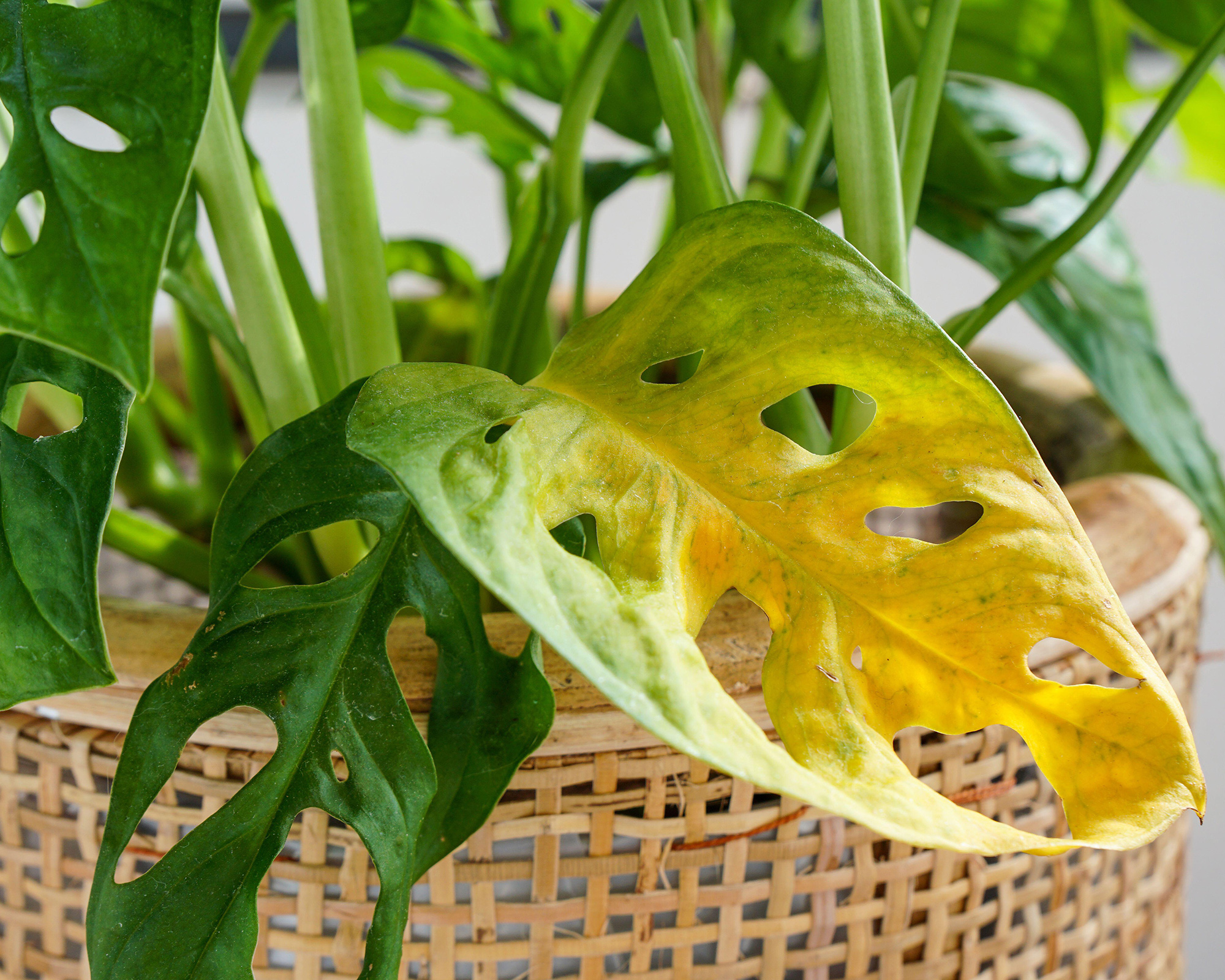
Yellowing leaves is a common sign of too much water
Avoid overwatering indoor plants by looking out for these telltale signs:
Check the seven danger signs of overwatering indoor plants below. If you notice one or more of these symptoms in your best indoor plants, take rapid action and it will have a fighting chance.
- Your plant looks droopy. You might be tempted to water it, but if it has pale, limp foliage, it’s already overwatered. Under-watered plants have dry, crispy leaves.
- A large number of leaves have turned yellow or brown, then drop suddenly. So if your Swiss cheese plant starts to look a bit too much like actual cheese, you are overwatering plants and need to cease immediately.
- Your plant’s leaves have soft brown patches with a yellow halo, and growth is slow or non-existent.
- Stems, roots and leaves are soft, brown and wilting. This is an indication of crown or stem rot disease caused by too much H2O. Root rot is also a common ailment in houseplants, including succulents and kentia palms.
- You notice slimy green patches on clay pots, or algae on the soil surface.
- Tiny black fungus gnats fly up from around your plant, and you detect a moldy smell.
- There’s white fungus growing on the surface of the compost.
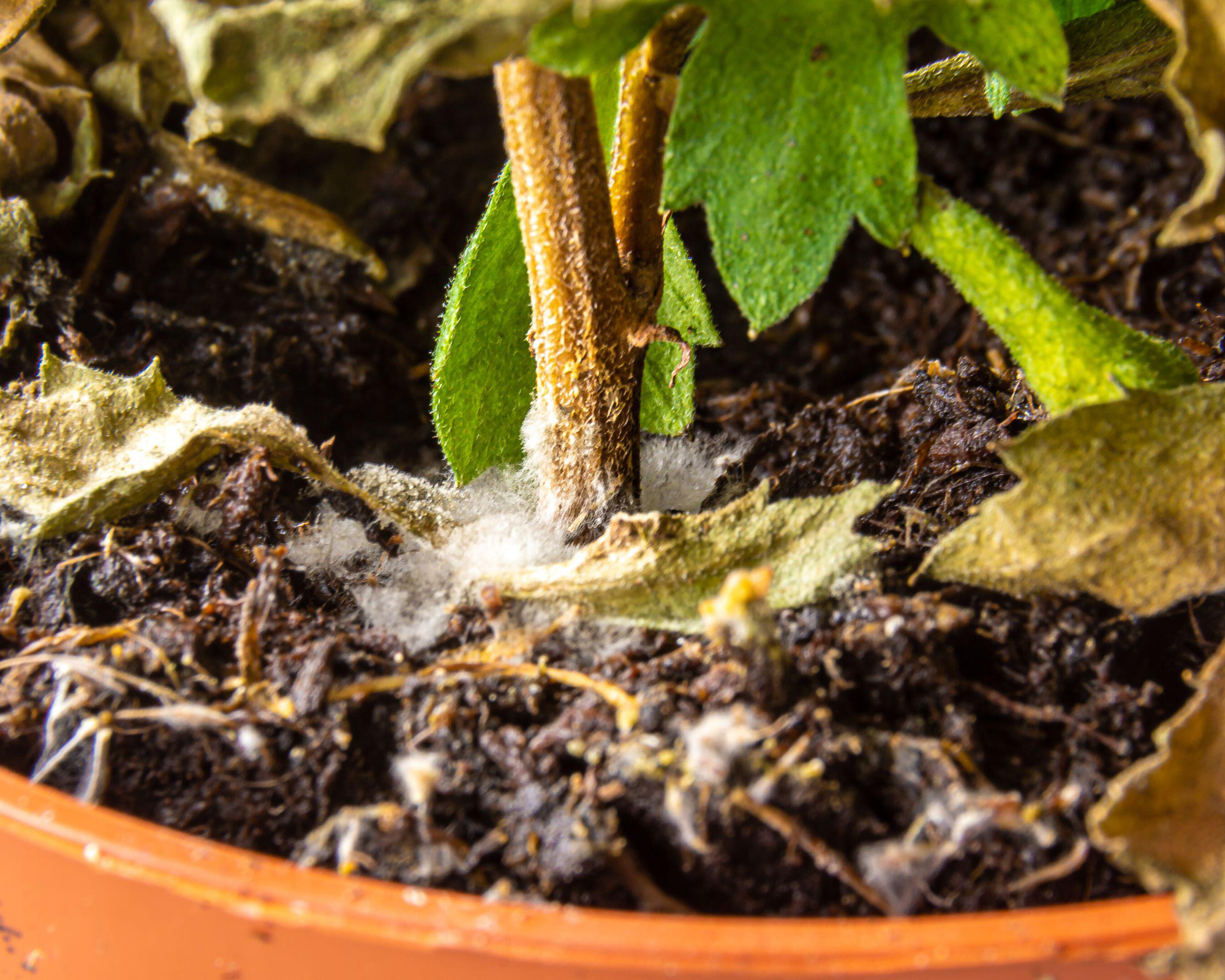
White mold appearing on the surface of soil is caused by overwatering
How do you fix an overwatered houseplant?
The first thing to do before you try these steps is to stop watering the plant, and pause any drip irrigation systems immediately. Leave it for a few days to see if the situation improves. If not, have a go at fixing the damage.
- Remove the plant pot and have a good look at the rootball. If it’s all brown and mushy, your plant is probably destined for the bin, sadly.
- If there are mostly firm, white roots, try removing any waterlogged compost gently from around the rootball. Ironically, the gentlest way to do this is by washing it off the roots.
- Trim off any brown roots. Put the plant in a dry place. Leave it on its side out of its pot for a day or so, so air can get at its roots.
- If there are more brown roots than white, your plant needs emergency surgery. Remove soggy compost, and trim rotten roots as before. Cut back top growth by around a third, to take the pressure off the plant and give it a fighting chance. Repot after a day or so into dry, multipurpose peat-free compost.
- Place in a well-lit spot away from direct sunlight. Don’t water it again until you spot new green shoots.
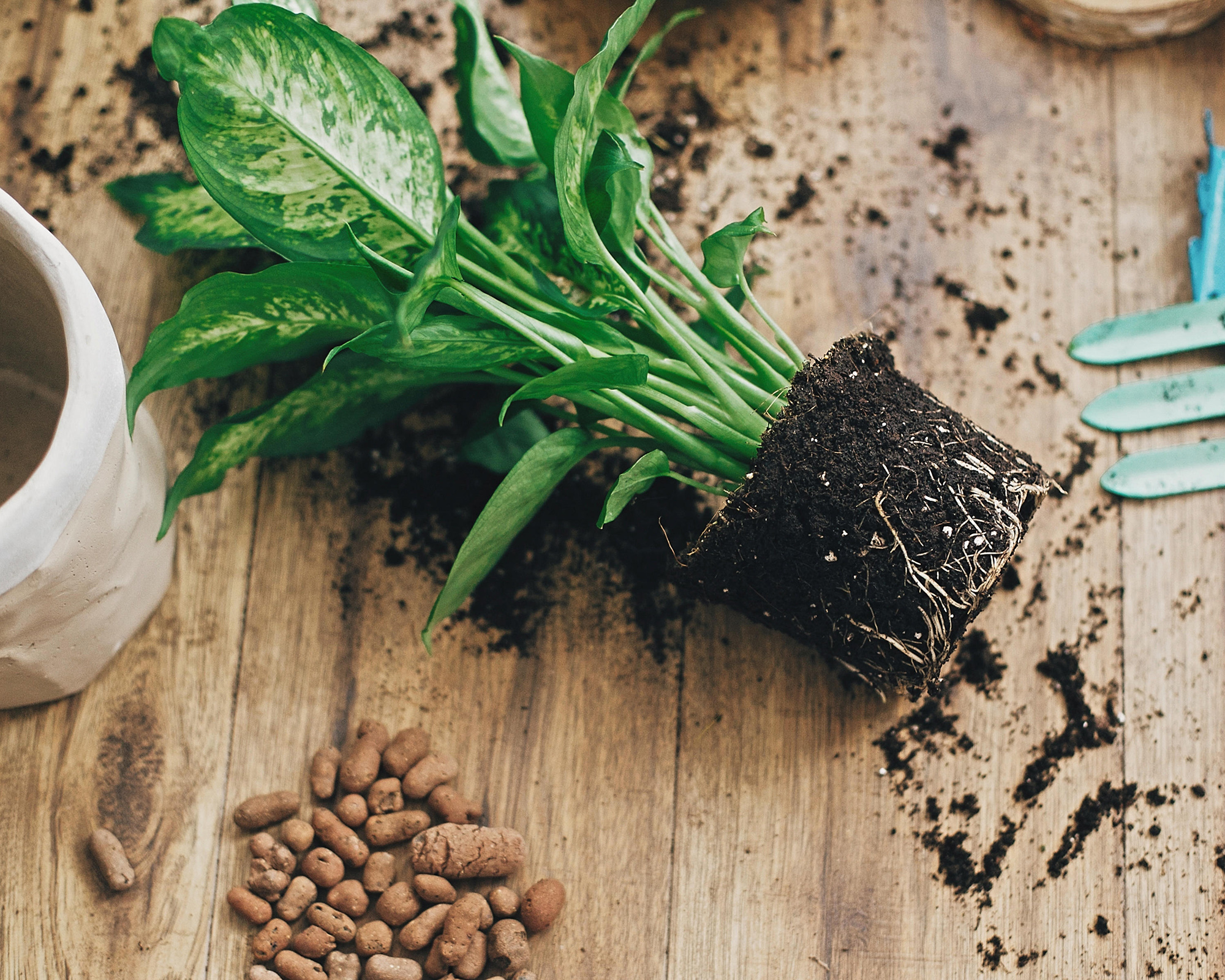
Firm, white roots are healthy roots. Brown mushy roots need to be cut away
How to avoid overwatering indoor plants
Each plant has its own set of likes and dislikes. The way to avoid overwatering indoor plants, is to discover each plant’s watering requirements. A snake plant for example, can survive for a month without water, whereas the maidenhair fern's compost must be kept perpetually moist. If you’re not sure, err on the side of caution – less is more.
Garden designer Matt James jokes that most houseplants prefer neglect rather than too much attention when it comes to watering. But watering needs also vary depending on size of plant, type and size of container, and time of year.
For example, plants in clay pots need watering more often than plants in plastic or ceramic ones. Smaller pots need watering more often than large ones. And plants have a resting period from mid fall to early spring, so reduce watering then.
Some plants, like aloe vera, need almost no water in winter, while others, like the Umbrella Plant (Cyperus) needs to be wet at all times. But The RHS advise that as a general rule, most plants appreciate water around twice a month over the winter period.
The best time to water plants is in warm weather, so step up watering and feeding in spring and summer, when plants are in active growth. You’ll need to water regularly, maybe twice a week or more, if the weather’s warm.
There are those who also believe in the rainwater benefits of watering plants, which can help your overall plant health. That is, if you don't overdo it!
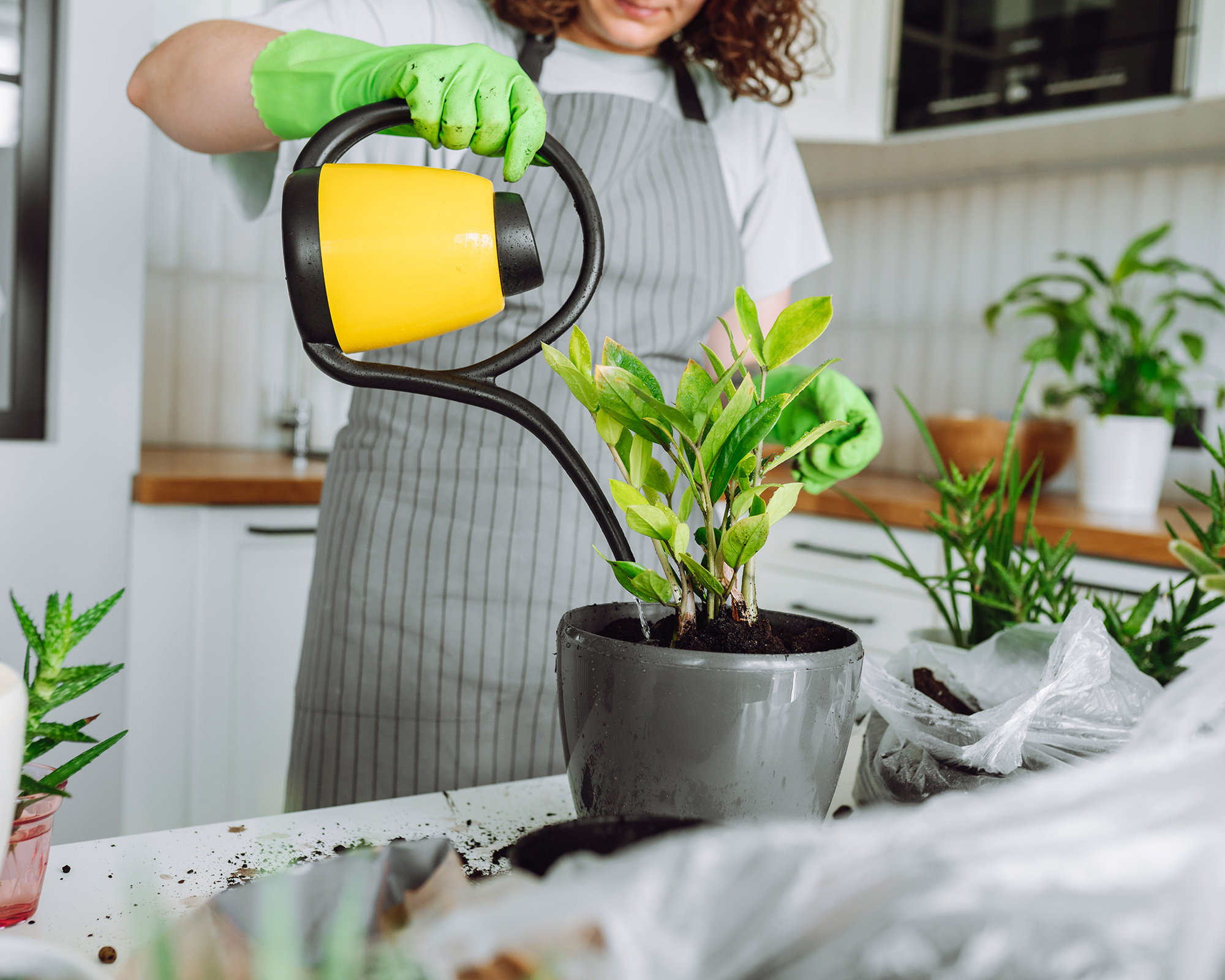
Learning your plants specific watering needs is the key to not over-doing it
How long does it take an overwatered indoor plant to heal?
Put your leafy patient in a dry, shady spot, like in a sheltered corner with your office plants or bedroom plants for a few days to help it heal. It should show signs of recovery within a day or so. It will begin to look perky (rather than droopy) and after a week or so you’ll see fresh green shoots of growth.
Water it at this point according to its requirements, letting the water drain off. Give it a couple of weeks before you put it back in its usual place. But if it’s still wilting after that, its condition is probably terminal.
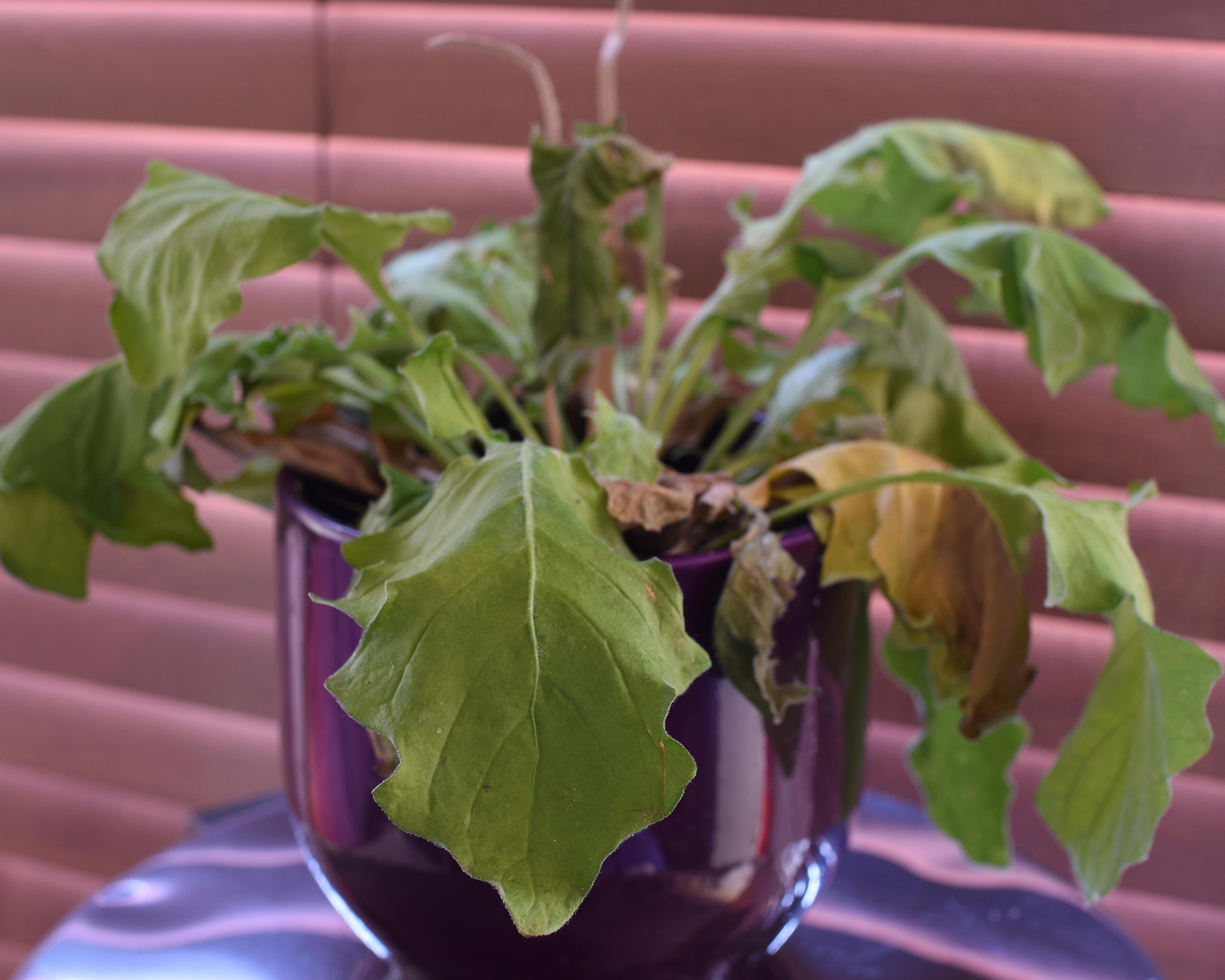
Keep overwatered plants in a dry spot out of the sun to help it recover quicker

Geraldine is a gardener and garden writer, who has worked for over 12 years in historic public gardens and private gardens around London. She has written articles for Easy Gardens, Which? Gardening and Women’s Weekly Gardening Special magazines and for gardeningetc.com. She also edited the book ‘Britain’s Favourite Plants’ for the RHS.
